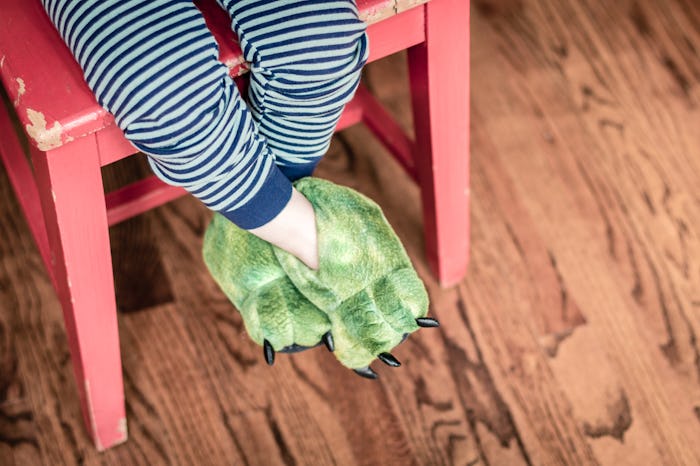Life

Timeouts Can Be Really Effective, But Only If You Follow These Expert Tips
As babies, your kids can get away with everything. But as they get older, you may begin to try and teach them about right and wrong with disciplinary consequences. One of the most popular approaches for disciplining younger kids is putting them in a “timeout”. But when is the right time to start using this method, and exactly when do kids understand timeout as a consequence to their actions?
Romper reached out to child therapist, Dr. Maureen Healy, author of Growing Happy Kids, who says you may have to wait until your child turns 4, which is when kids may generally begin to understand the concept of a timeout. For kids, understanding discipline or punishment is dependent on whether or not they understand the difference between unfavorable and favorable behavior. If they don't know that what they're doing is wrong, they won't understand why or what the timeout is for.
It turns out that if your child is too young, a timeout may not be a useful method of discipline at all. Healy explains because a timeout is used as a method to help children stop before they make another "poor choice" or as a "consequence" after one has been made, it’s important that they understand why they are getting it. “Before age 4, most children have difficulty understanding the reasoning behind a timeout,” says Healy, “so it's not as effective.” It's important to gauge your child’s maturity level and what they understand before you implement any disciplinary methods.
As your child gets older, they’ll begin to understand behavior and consequence more clearly. At the age of 4, explains Healy, children can begin to understand reasons and logic and she says that it is generally at this age that they begin to make connections between cause and effect. This is why, says Healy, that generally “at and after age 4, timeouts become more effective.”
But that doesn’t mean you can’t use a timeout for a child under 4. In fact, according to the American Academy of Pediatrics Healthy Children, timeouts can be used for children from 2 years to 5 years old, and more throughout the rest of their childhood if needed. However, the website explained that your child’s timeouts should be timed according to their age, and as a rule of thumb, you should put them in one minute of timeout for each year of their age. So if you have a 3-year-old, three minutes of timeout is more than enough. The article further noted that sometimes even 15 seconds is enough for a child to stop their behavior, so you should try and see what works best for your child.
For timeouts to be effective, you should also know how and when to implement them. According to the Centers for Disease Control and Prevention (CDC), timeouts should be used only after your child has first been given a warning. The organization noted four instances in which timeouts are appropriate — when your child is doing something dangerous, if they are hurting someone, if they break a family rule, and if they do not follow your directions after they’ve been given a warning.
The CDC suggested that for toddlers and preschoolers, before you try a timeout, it’s a good idea to try distracting them or redirecting them first. This may be more effective for little ones who don’t yet completely understand the concept of consequences. At the end of the day, each child is different, and each child will mature differently. As a parent, you know what disciplinary action works for your child, and after a little trial and error, you’ll know exactly how and when to use it.
Check out Romper's new video series, Romper's Doula Diaries:
Watch full episodes of Romper's Doula Diaries on Facebook Watch.